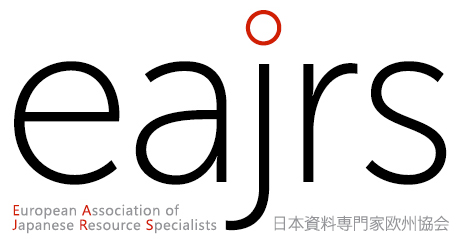![]() Ishikawa Yoshie
Ishikawa Yoshie
Hiroshima Prefectural Archives. Researcher, Early Modern Materials Department
A systematic case study of the official documents of the Hiroshima Domain Government in Edo period through Ryoshi examination
This presentation proposes the role of Ryoshi (料紙, materiality of paper) in analyzing the historical documents in the Hiroshima Domain Government (HDG; Hiroshima-han) from the middle to late Edo period, demonstrated through the materials in the Hiroshima Prefectural Archives. During this era, samurai officers made official use of various papers of different size, folding patterns, colors, and thickness to honor the receiver’s status and expressing the importance of the communique. HDG’s law required samurai officers to use Iro-moroguchi (色諸口) paper and Iro-hanshi (色半紙) paper, which were dyed in pale pink, for all forms of official documents.
Incorporating the evidence from the samurai’s diaries, journals, and the scientific examination of paper materials, this presentation demonstrates that Ryoshi visualizes the four Cs in HDG: Class society, Community spirit, Credibility of official document, and Color-coded network.
 It argues that Ryoshi played the role of preserving the social order, especially feudal system in samurai society, and guaranteed the authenticity of the official document. Furthermore, Ryoshi gave unique functions to the samurai’s documents to govern their domain effectively through its colors and forms. As a first-of-its-kind systematic study of paper materials used in historical resources that aims to set precedence to pre-modern Japanese studies, this presentation demonstrates the variety of innovative approaches to administrative paperwork in HDG through the lens of Ryoshi and showcases how the examination of papers as materials can illuminate the order and structure of historical documents from Edo period.
It argues that Ryoshi played the role of preserving the social order, especially feudal system in samurai society, and guaranteed the authenticity of the official document. Furthermore, Ryoshi gave unique functions to the samurai’s documents to govern their domain effectively through its colors and forms. As a first-of-its-kind systematic study of paper materials used in historical resources that aims to set precedence to pre-modern Japanese studies, this presentation demonstrates the variety of innovative approaches to administrative paperwork in HDG through the lens of Ryoshi and showcases how the examination of papers as materials can illuminate the order and structure of historical documents from Edo period.
The case studies of Ryoshi from Edo period are an emergent field, and it is necessary to conduct further studies in different areas. However, it is said without a doubt that Ryoshi gives a new perspective to pre-modern history of Japan.
